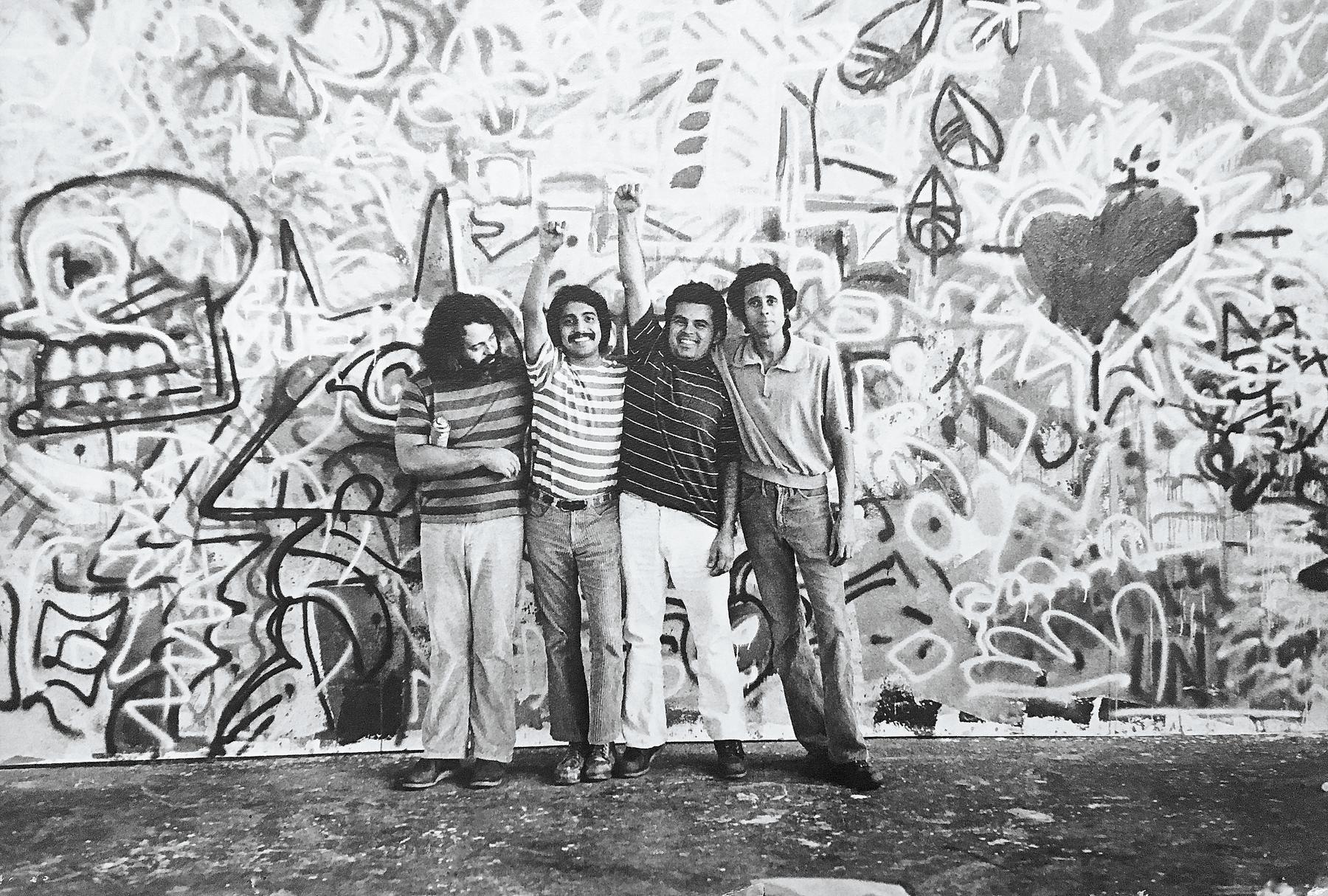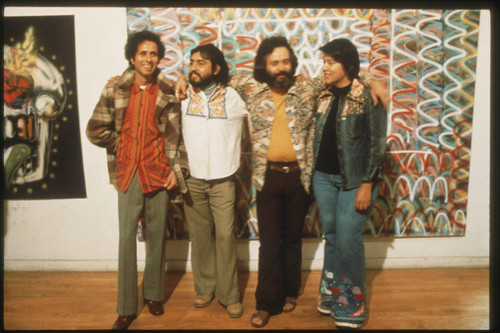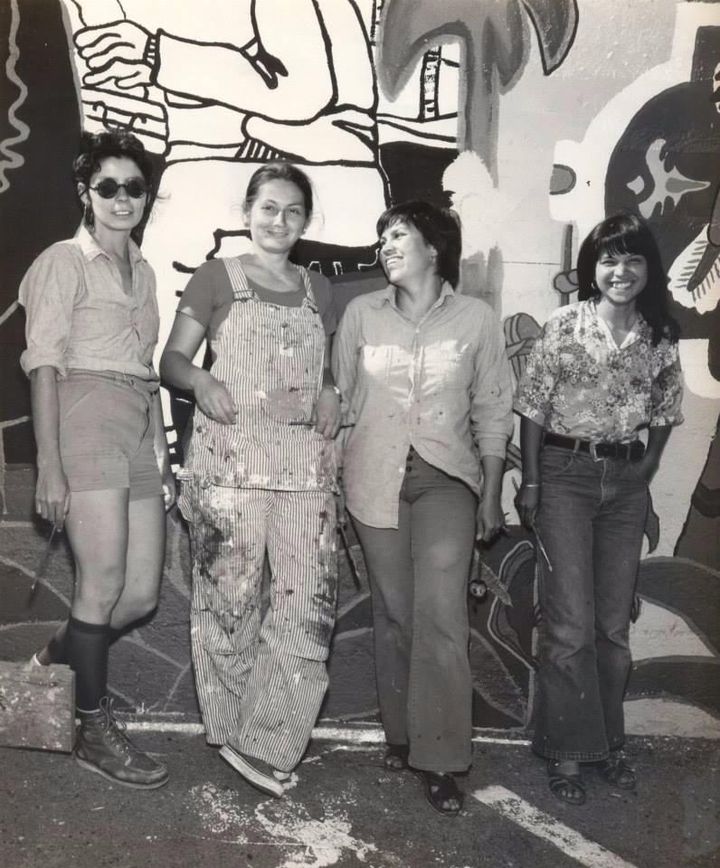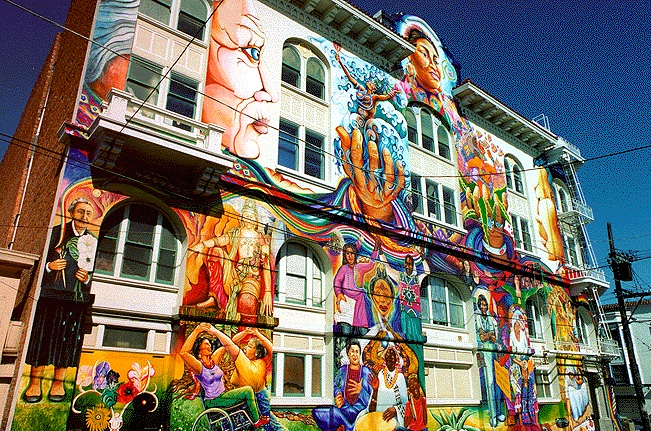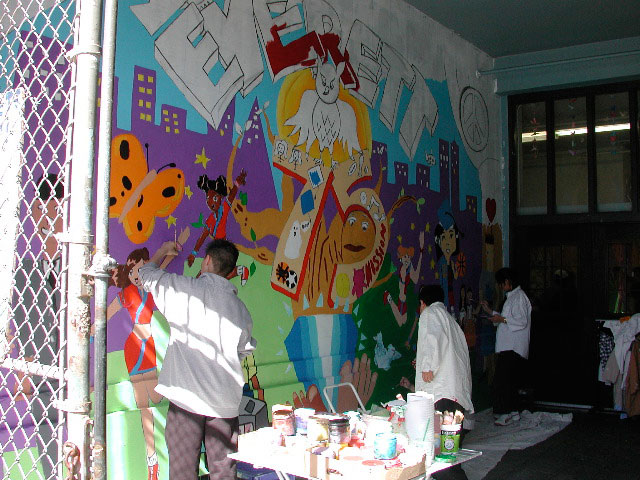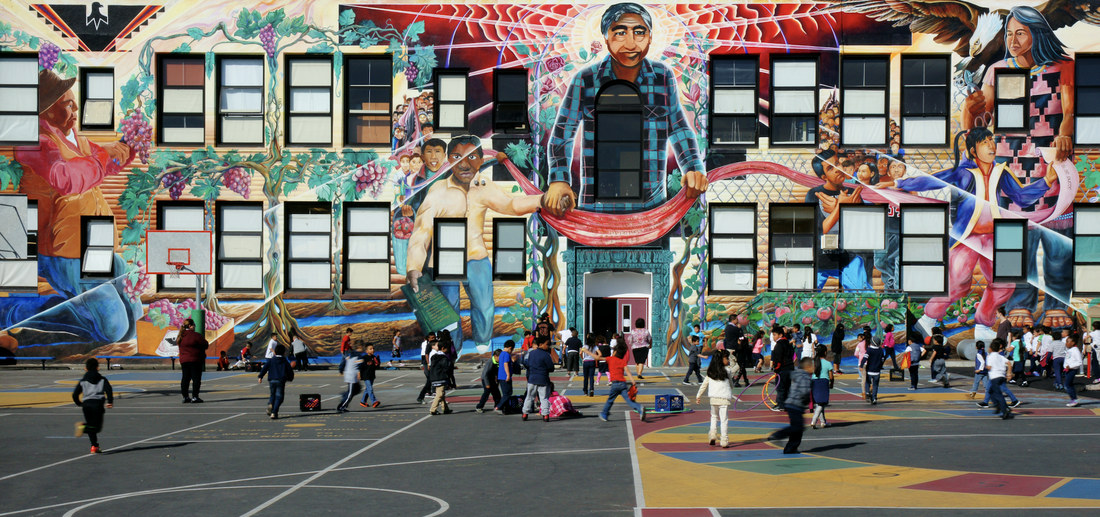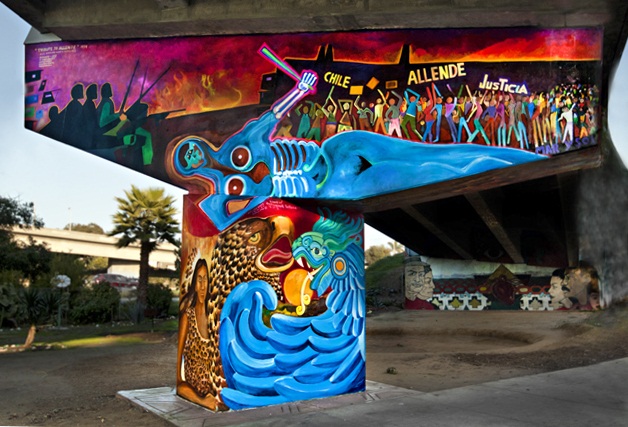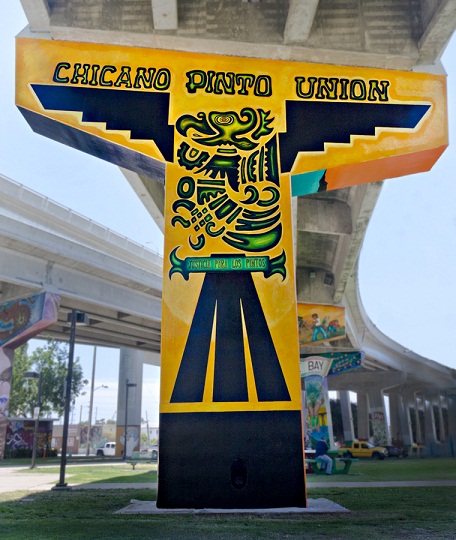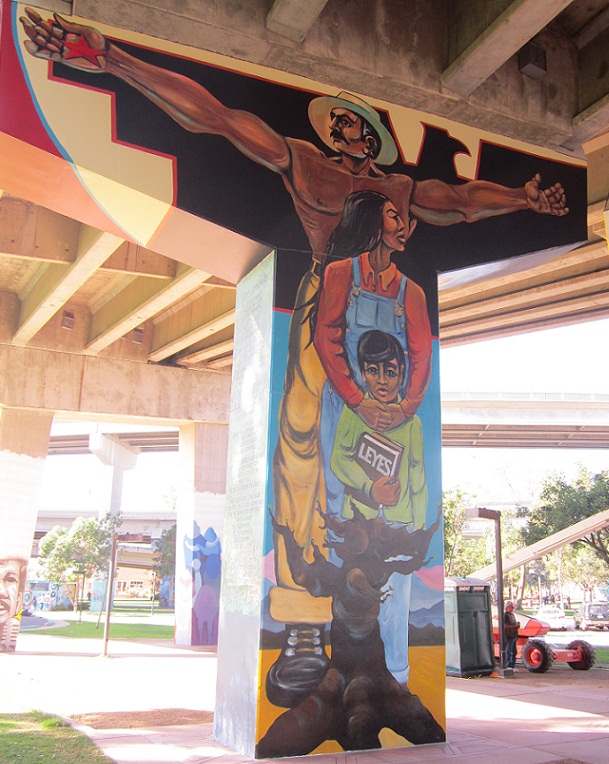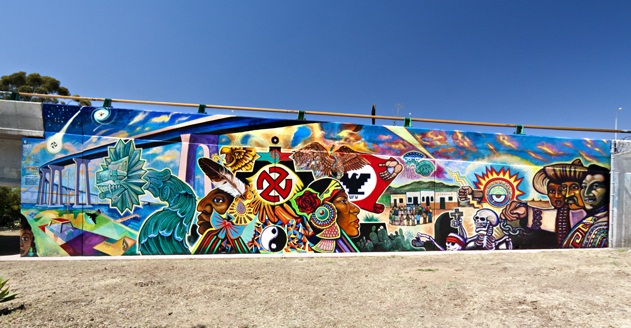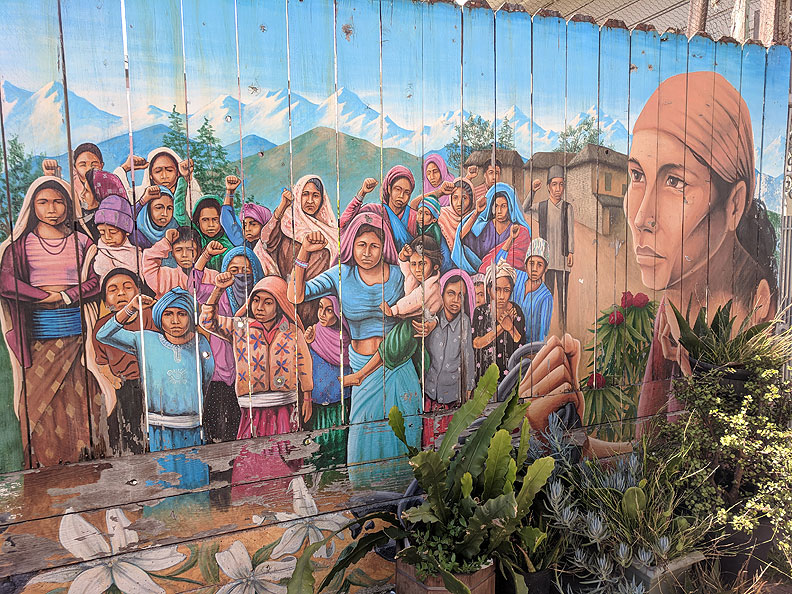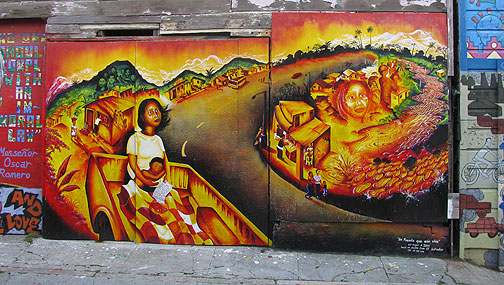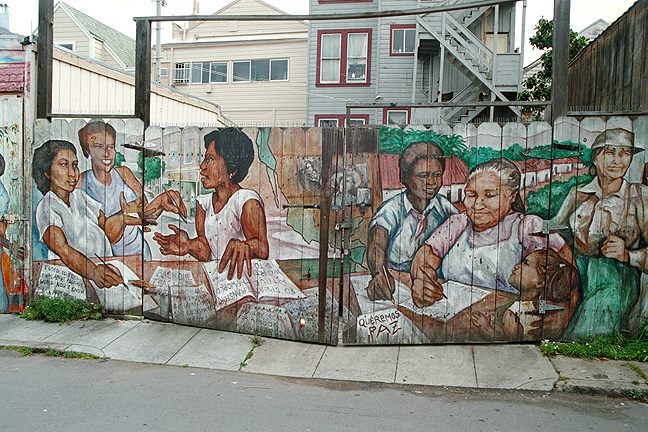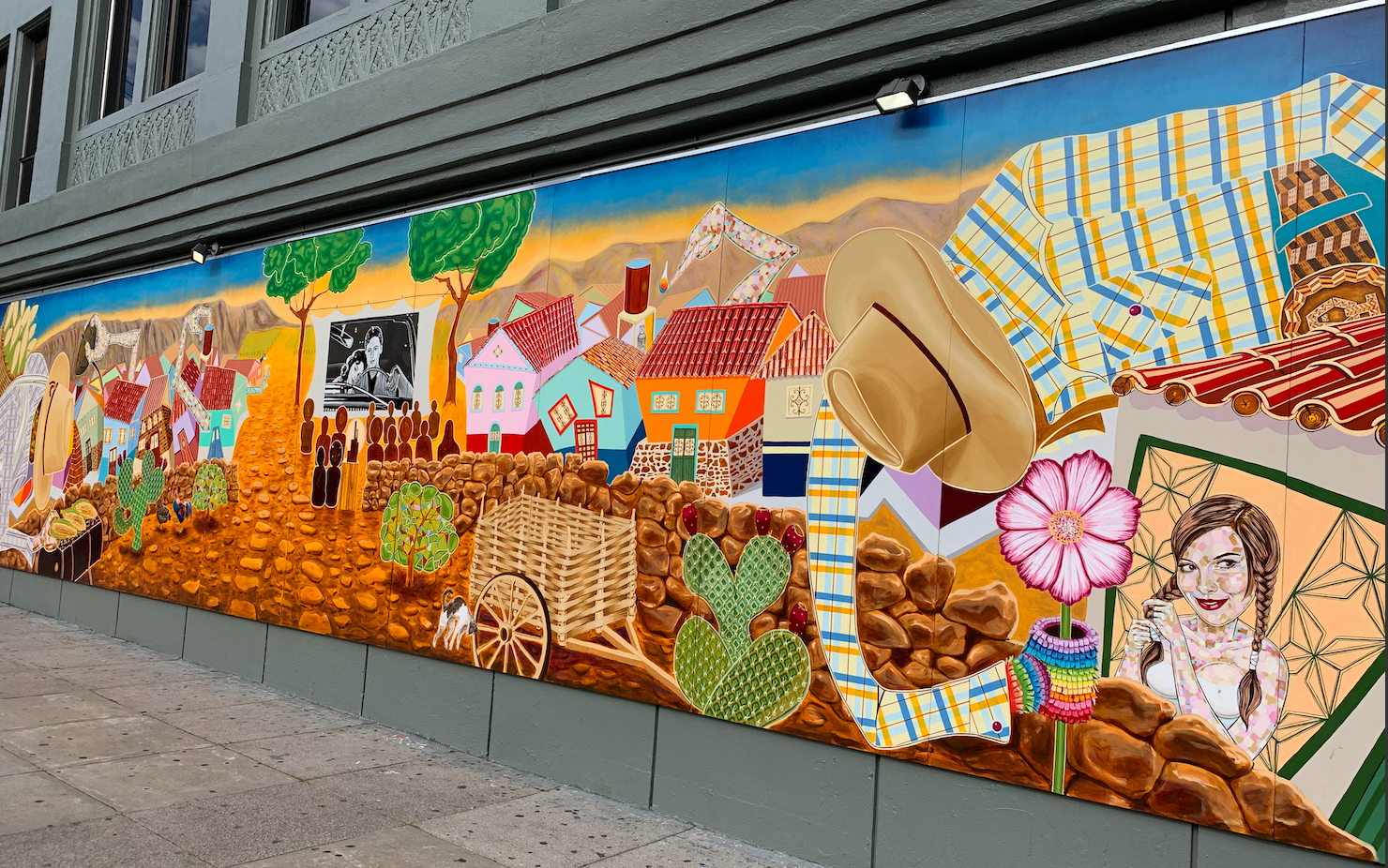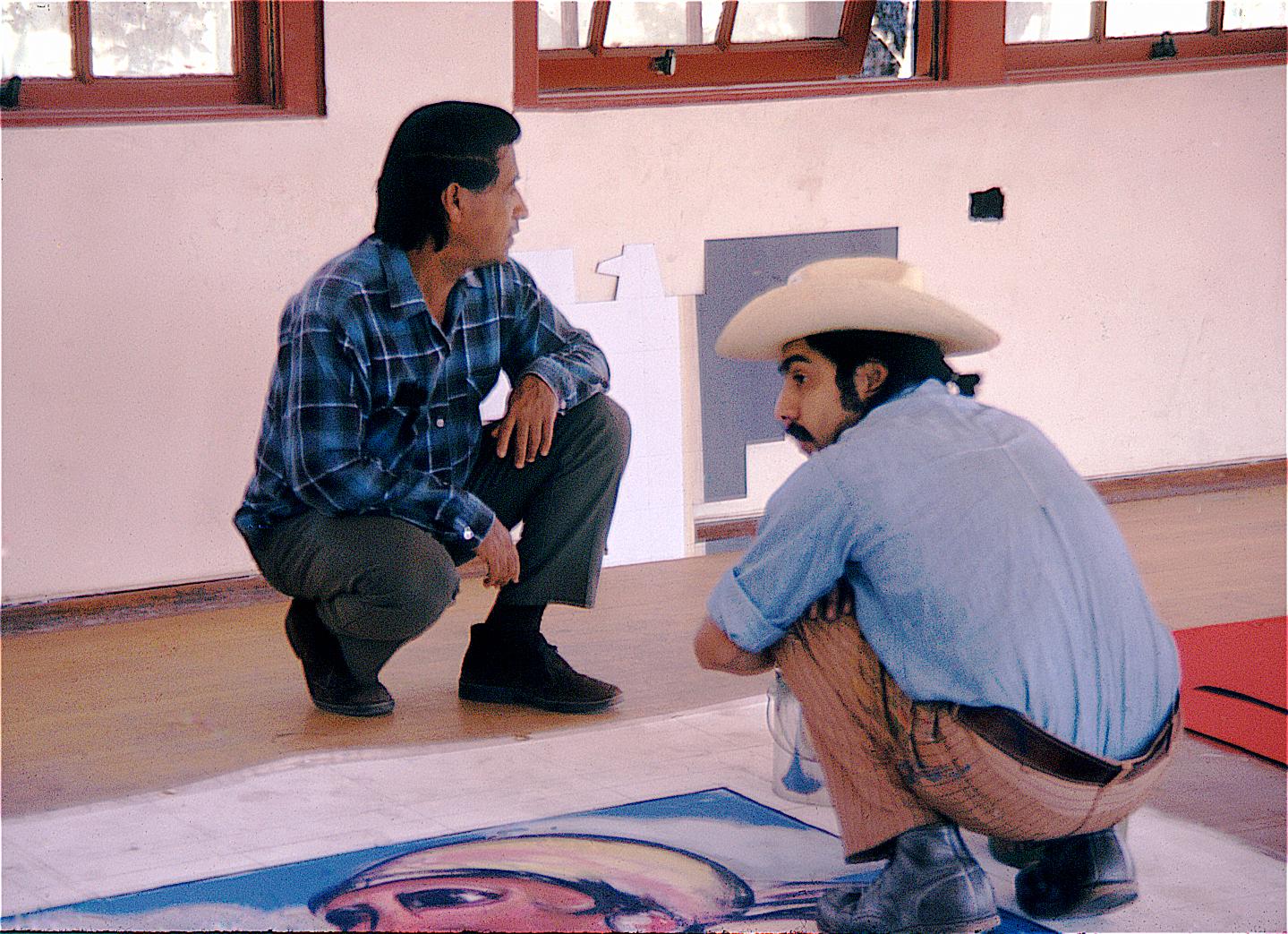
Carlos Almaraz Estate. Cesar Chavez with Carlos Almaraz as he works on a convention mural for United Farm Workers. 1973
"So we went back and sure enough, he said, "What do you want to do?" I said, "Well, I want to do a big banner, very political, very like a big political cartoon, blown up, so that people can see. . ." We're talking about farmworkers who don't read, you know, they do read some Spanish but not a lot. I said, "Let's get a picture across to them of their own struggle."
- Carlos Almaraz, Chicano artist, "Interview with UFW Muralist, Carlos Almaraz.", 1987.
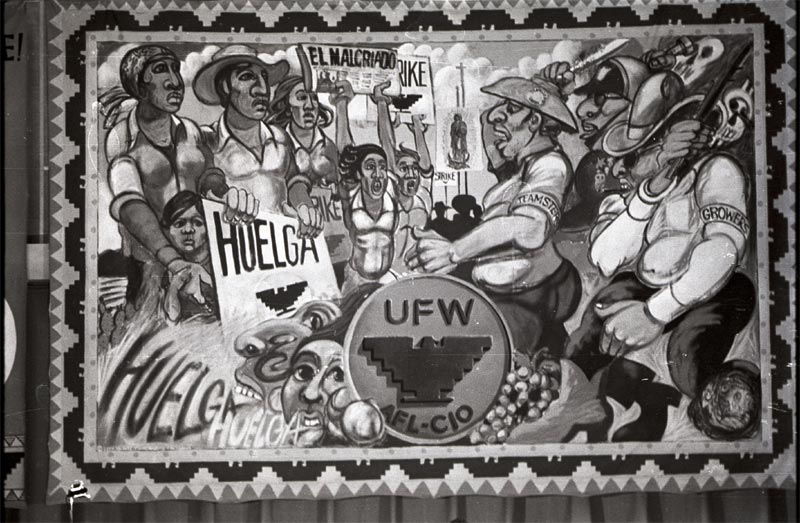
Almaraz, Carlos. United Farm Workers Mural. 1973.
